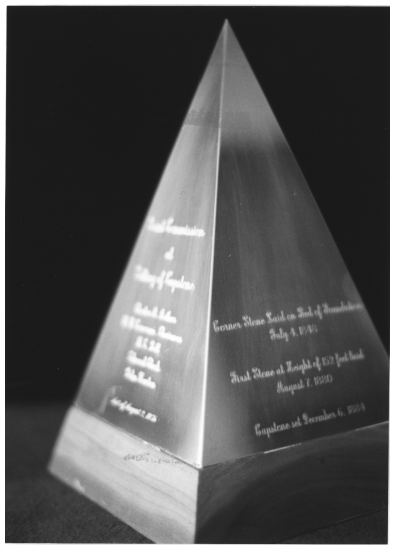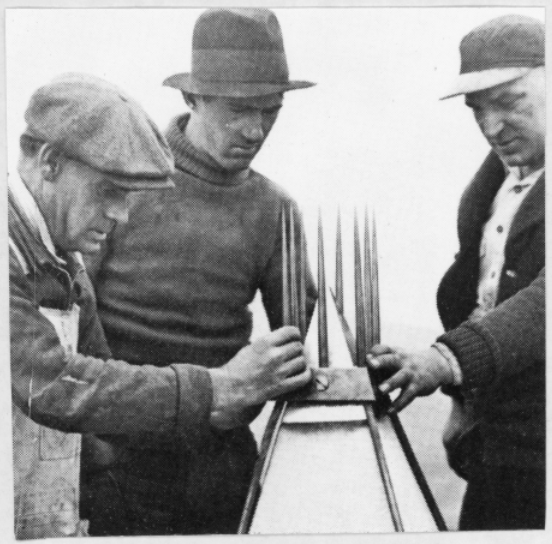
While the primary functional purpose of the aluminum apex was to serve as a lightning rod for the structure, it was relegated to a subsidiary role within a few short months. When completed in 1884, the monument was the tallest man made structure in the world at 169.1 m; even today it remains the tallest free-standing masonry structure in the world. Aluminum was chosen for the application because of its conductivity, color, and non-staining qualities. In essence, the aluminum point became a victim of the design application and the lack of data and experience concerning lightning strikes on tall structures.
The overall lightning protection system had seemed quite adequate when designed in 1880. It consists of four hollow wrought-iron columns that stand in the well of the shaft. These act as supports for the elevator machinery and serve as a guide to the car. These columns are 15 cm in exterior diameter and slightly more than 1 cm thickness. The columns rest upon cast-iron shoes that are set in the large drum pit below the monument floor. The cast-iron shoes are connected to soft copper rods that, in turn, lead to the bottom of a water well below the masonry foundation. No disruptive discharge of electricity was experienced between 1880 and 1884.
During the 1934 refurbishment of the monument's exterior, it was noted that lightning strikes had blunted the tip of the aluminum apex and some globules of aluminum had fused to the sides. Some deterioration from strikes was also noted on the original gold-plated copper points inserted vertically into the copper band affixed to the base point perimeter of the apex in 1885. It was decided to replace this band and points with eight larger copper rods, which extended in a slightly different configuration 15.2 cm above the aluminum apex itself (Figure 4). Essentially, only refurbishment rather than redesign of the lightning protector system was done in 1934, even though extensive design experience had been gained in this field during the preceding 50 years with the building of massive, taller, city skyscrapers.

